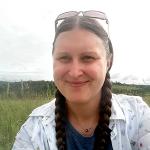Regular updates on projects undertaken by our team of restoration ecologists, entomologists, plant ecologists, and researchers.
The Xerces Society manages the largest pollinator conservation program in the world. We work with people from all walks of life to create habitat for bees, butterflies, and other beneficial insects—and hundreds of thousands of acres of flower-rich habitat have been planted. We also offer certifications: Bee Better Certified for farmers and food companies who are committed to supporting pollinator conservation in agricultural lands, and Bee City USA and Bee Campus USA for cities and colleges dedicated to making their community safer for pollinators.
With staff based in more than a dozen states, and offering a diverse array of expertise, it can be challenging to summarize the impactful work being done. We compile updates from pollinator team members into regular digests. In this edition, Kelly Gill reports on the successful distribution of habitat kits across a nine-state region of the Mid-Atlantic and Northeastm, and Sarah Foltz Jordan describes a multi-farm project to expand pollinator habitat in Wisconsin.
Northeast Monarch and Pollinator Habitat Kits
Kelly Gill
Xerces’ Northeast Monarch and Pollinator Habitat Kit initiative is a way to foster more monarch habitat restoration work and expand the diversity of partners we work with in the Mid-Atlantic states and New England. Through the project, we provide plants and guidance to conservation-minded groups and individuals that want to take action to improve habitat for monarch butterflies and other local pollinators, but for whom the costs may be prohibitive. Four types of habitat kit suited to different conditions were developed in partnership with Pinelands Nursery, a native plant nursery in Columbus, NJ. The kits contain native milkweed to support monarch caterpillars and a variety of nectar plants that will fuel adult monarchs and important pollinators.
A total of 46 kits—nearly 36,000 native plants—were distributed to agencies, conservation districts, nonprofit organizations, nature centers, community groups, Bee City USA and Bee Campus USA affiliates, and other eligible organizations across nine states. These will be planted on working lands, natural areas, parks, preserves, schools, and community spaces, creating habitat in a wide range of places. Sites where kits are installed will also be used for education and outreach events, outdoor classrooms, learning labs, urban farms and gardens, inner-city youth programs, community science, and more.
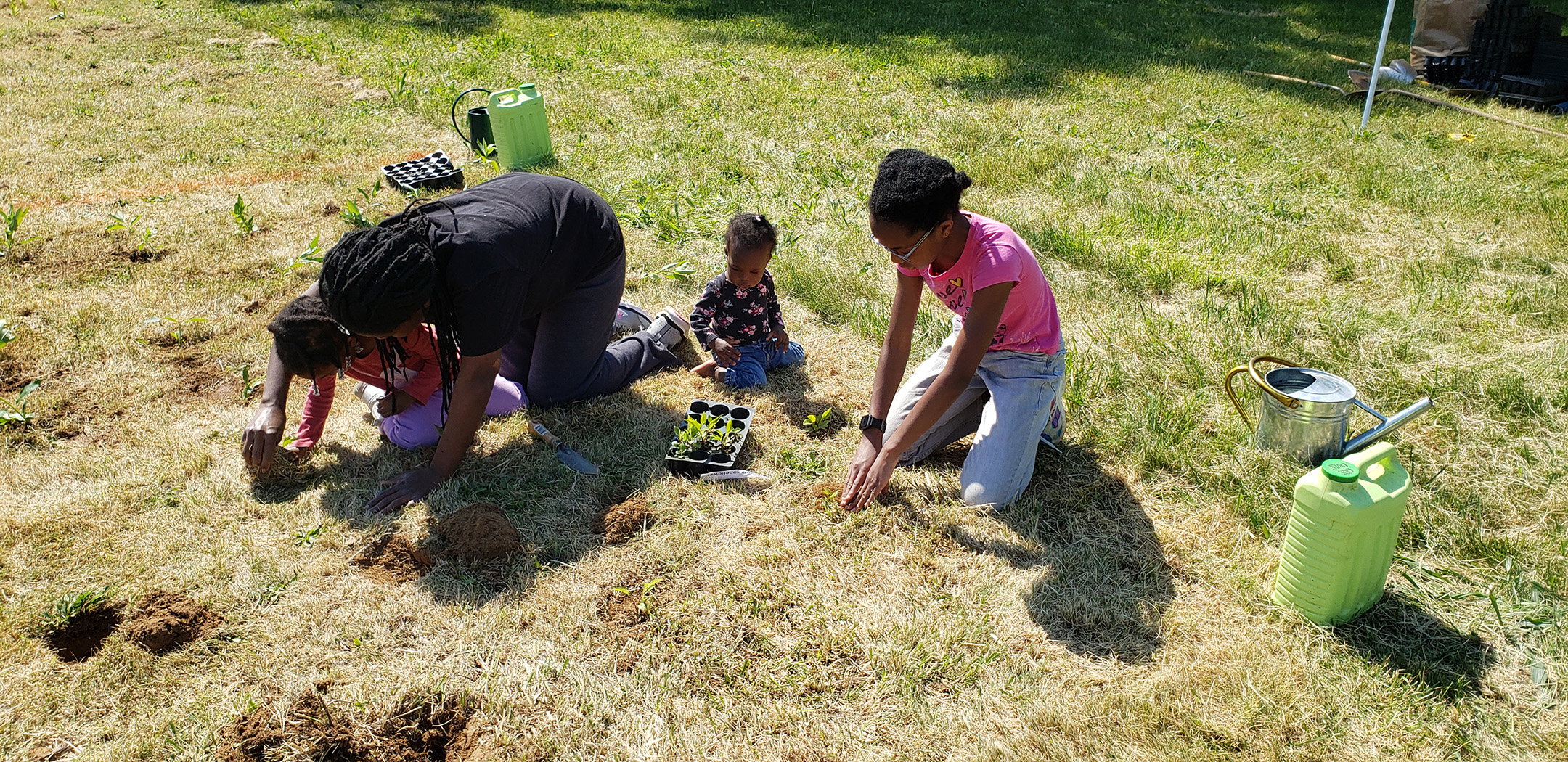
Xerces was able to support the work of Bee City USA affiliates. In Allentown, NJ, community members organized by the town’s Bee City USA committee joined together to plant the habitat kit at Heritage Park. (Photo courtesy of Janice Buchalski, Bee City USA – Allentown & Allentown Environmental Commission.)
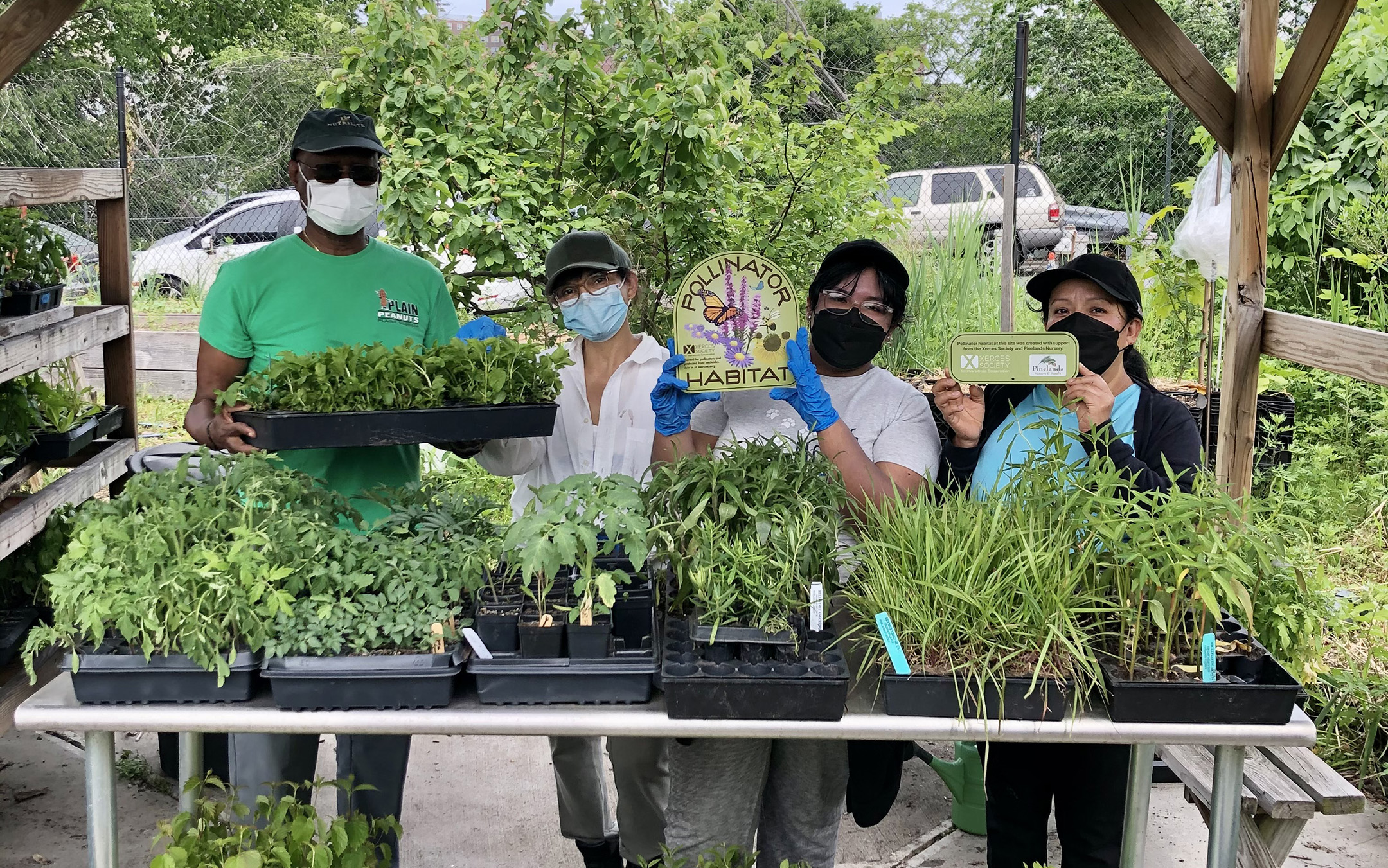
Xerces partnered with New Jersey’s Pinelands Nursery to grow a selection of regionally native milkweeds and nectar plants. The plants were distributed to groups in nine states, including New York City’s New Roots Community Farm, shown here. (Photo: Dina Garcia, New Roots Community Farm.)
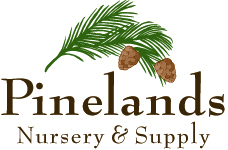
Enhancing Habitat on Wisconsin Farms
Sarah Foltz Jordan
This spring, I've been excited to begin expanding our on-farm pollinator habitat work into the Bayfield area of Wisconsin. Situated along the south shore of Lake Superior, this unique region boasts a warm microclimate (relatively speaking!) and produces some of the best fruit around—most of which is highly pollinator-dependent. With funding from the Wisconsin Natural Resources Foundation, we have partnered with four local farms to install pollinator-friendly habitat, ranging from native hedgerows to native insectary strips, as well as flowering cover crops, native pocket plantings, and a pollinator meadow as part of a self-guided farm walking tour. Planted on a cluster of neighboring farms, these habitats will serve as the hub of a demonstration site at which further farmers and community members can learn from via field days, work parties, and other future events.
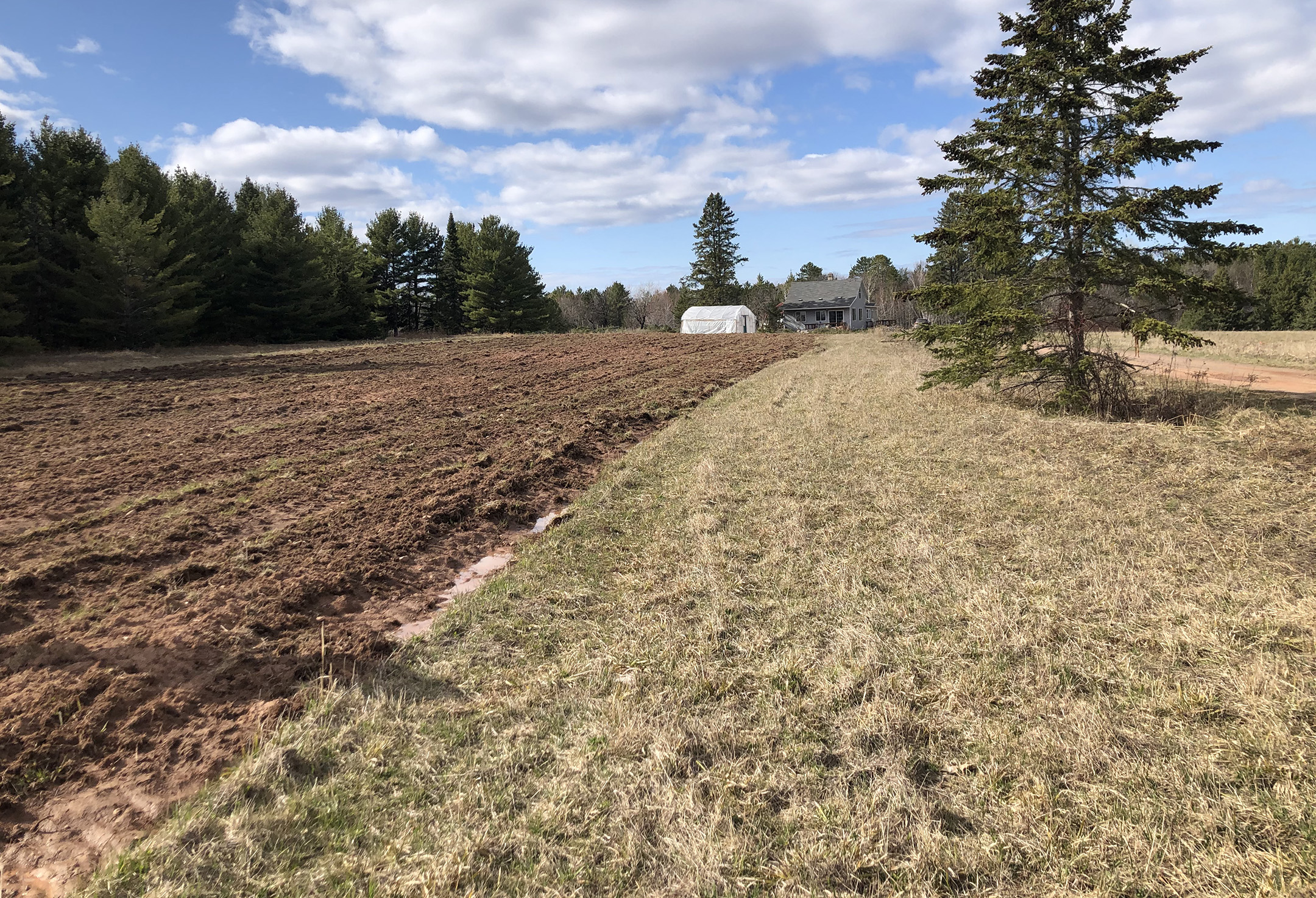
Xerces staff partnered with the farmer to plan a 300-foot-long native hedgerow along the length of this cultivated vegetable field. The hedgerow will include 17 species of native plants, including juneberries (Amelanchier sp.), highbush cranberry (Viburnum opulus var. americanum), chokecherry (Prunus virginiana), and dogwoods (Cornus sp.). The grower is a beginning farmer, but has a background in agroecology, and is thrilled to be getting started on his journey of "farming with nature." (Photo: Xerces Society / Sarah Foltz Jordan.)
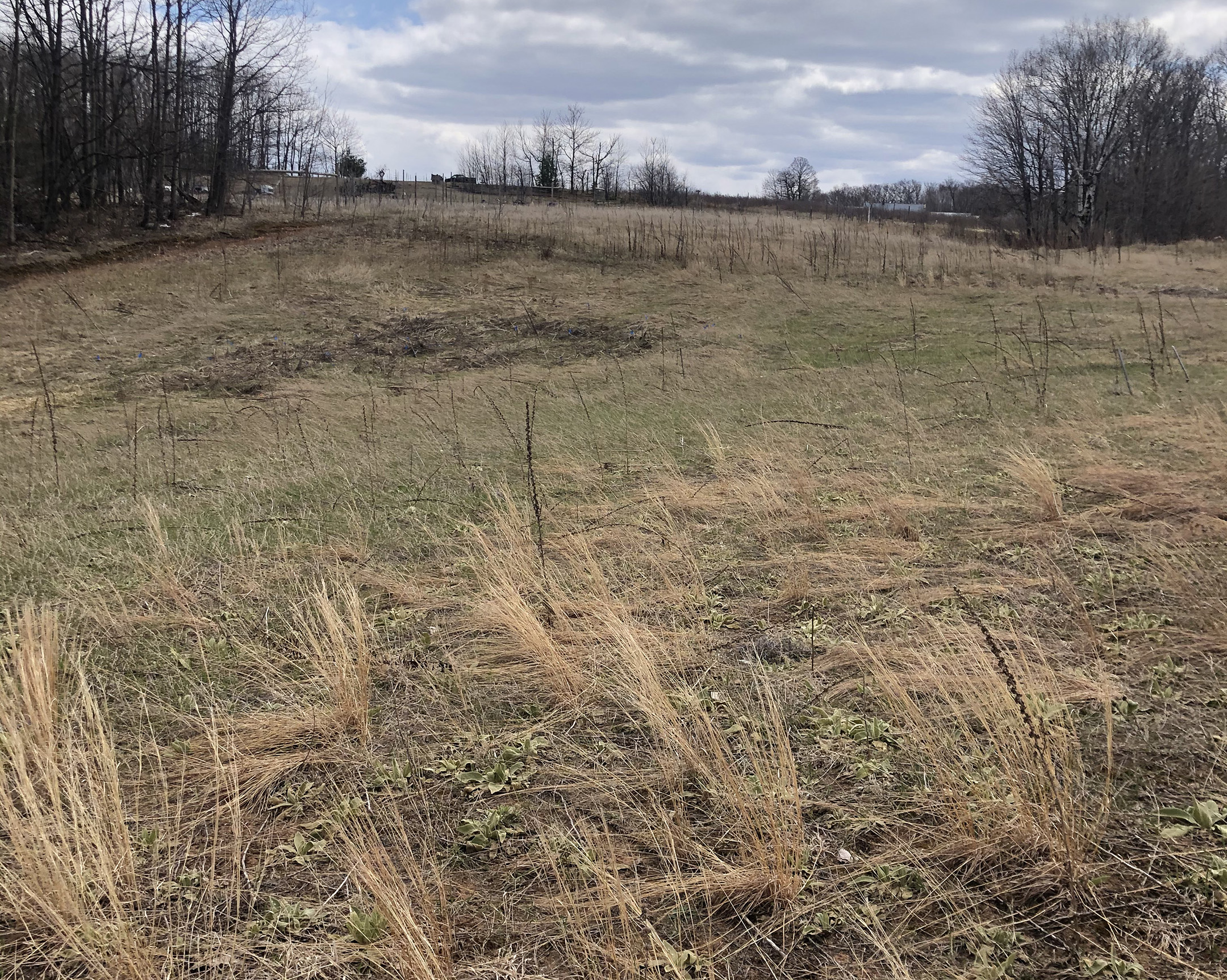
Sometimes restoring even a small site takes a variety of approaches. This 1-acre basin was set aside for pollinator habitat several years ago, but performance was never impressive. When Xerces’ local conservationists connected with the owner and farm staff, they were quick to highlight this area and ask for help assessing the situation. It was decided to divide the area into three parts, each with a different approach to get the area in shape: 1) the bottom of the basin will be covered with plastic tarps to manage Canada thistle, prior to fall-seeding natives; 2) the middle area will be smother-cropped with densely seeded oats and buckwheat prior to fall-seeding natives; and 3) the upland area will be interseeded with native seeds (and possibly plugs) in the fall, since this area already has low weed pressure and a decent abundance of natives, but is lacking in diversity. (Photo: Xerces Society / Sarah Foltz Jordan.)
Further Reading
Learn more about the Xerces Society’s Pollinator Conservation Program.
Find out how you can help Bring Back the Pollinators.

